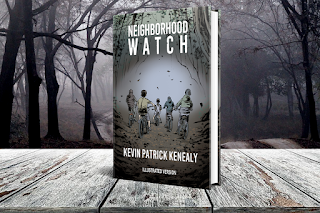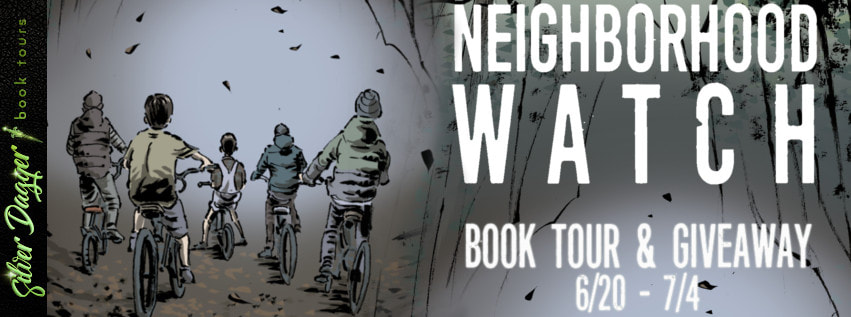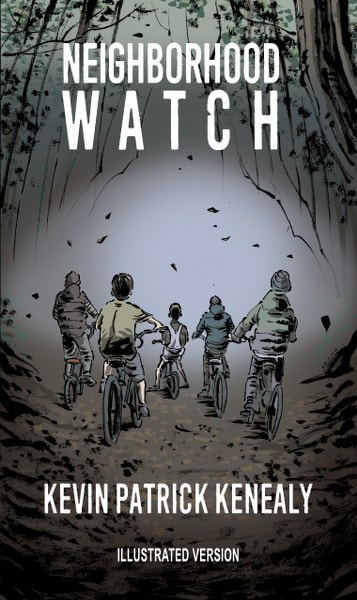WATCH
By
Kevin Kenealy
Chapter 1: Ridgeport
1
When Scott Casey reflected on his time living out his formative years in his parents’ Tudor-style home on Forest View Lane in Ridgeport, Illinois, he shuddered as if a chill was running up his spine. As the rain pounded outside his apartment window, he thought long and hard about what he was going to say. At thirty-three, Scott lived about as far away as one could get from Ridgeport: in a one-bedroom apartment in Honolulu. But Ridgeport never moved away from Scott.
Nestled between Naperville and Aurora, Ridgeport was buried on any map. No one outside a ten-mile radius had ever heard of Ridgeport until it made headlines in 2004 for the town’s first murder in its 110-year history. After that, it captured America’s attention as a town to watch and study under a microscope.
Until that murder, the hearts of Ridgeport’s residents seemed to beat as one — synchronized to the same rhythm—and anyone who lived there could feel it. Like most kids growing up in a small town, Scott and his friends knew every shop, business, and street within a half-hour bike ride from one end of town to the other.
Despite its diminutive size, Ridgeport supplied residents with everything they needed. In fact, residents never needed to leave town to do business or be entertained. They never even had to leave the town’s borders. A local grocery store stood from the 1960s, and Ridgeporters ventured to that store for all their provisions. A barbershop occupied a lot downtown, along with a women’s boutique. Ridgeport Mall, a frequent spot for entertainment in the community, opened in the 1980s with shops, restaurants, and a movie theater on the first floor. The town’s parks were well maintained, and on any summer day, Ridgeport’s families enjoyed watching Little League baseball games during the day and adult softball games at night. Fuller Park hosted the annual Ridgeport Festival, which offered a carnival, food vendors, games, and over-the-hill bands. With about 15,000 residents, the town was home to two elementary schools, a private school for grades K-8, and a junior high. Ridgeporter teens attended either one of the area’s private schools or Hartville High in Naperville, a top-rated school in the nation.
Scott didn’t realize it when he was young, but he lived in a well-to-do area. Many people hired a lawn service, and most moms stayed home to take care of the children. Scott never wondered why the moms of his best friends Matt Norris and Riley Wrobel were always home; he just figured that’s how things were. If they really wanted to, kids could play in the streets at three o’clock in the morning, and their parents would have nothing to worry about. But worry, they did.
The mothers in Ridgeport advocated for a crime-free town, a place that was perfect for raising a family, a place like no other. So, when Sue Ellen Norris served as the president of the Ridgeport Historic District, she made it her business to create a Neighborhood Watch group which the entire neighborhood agreed to.
Yes, Ridgeporters loved growing up there. Yet outside of their ten-mile radius, no one had ever really heard of Ridgeport. And those in town wanted to keep it that way.
2
There is a saying, “Once a Ridgeporter, always a Ridge-porter.” Many citizens settled there for life, while others found that the longer they stayed, the harder it was to leave. The town served as a security blanket to many, a place where everyone knew your name and nothing changed. The town Scott Casey grew up in remained the same as he reached adulthood, at least physically.
Ridgeport stood out as an anomaly in Illinois, where, after living with years of political corruption and high taxes, most residents could not wait to leave. When cars entered Ridgeport, the welcome sign read, “Ridgeport Welcomes You,” not “Welcome to Ridgeport.” It was as if Ridgeport itself was a living, breathing entity. Yet most people paid no attention to the sign as they hurried along to bypass the main two-mile stretch of Coleridge Ave. (named after the town’s first mayor) and on to wherever their busy lives were taking them….
5
…Ridgeport served as a model community. By 1999, the police force boasted that the town had not seen a murder in its ninety-year history, and year after year, Ridgeport ranked as the safest town in America. When the town’s officials were asked why, they always said the same thing, “Love thy neighbor” and “Love thy Ridgeport.”
Yet, Scott Casey did remember some scary things from his thirty-three years there, like a few missing person cases. And it was one of those missing persons that led to the town’s first murder.










Comments
Post a Comment